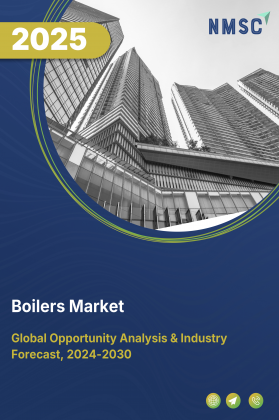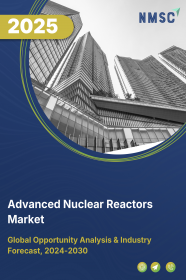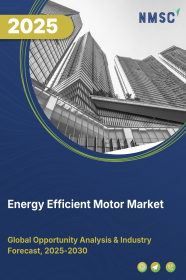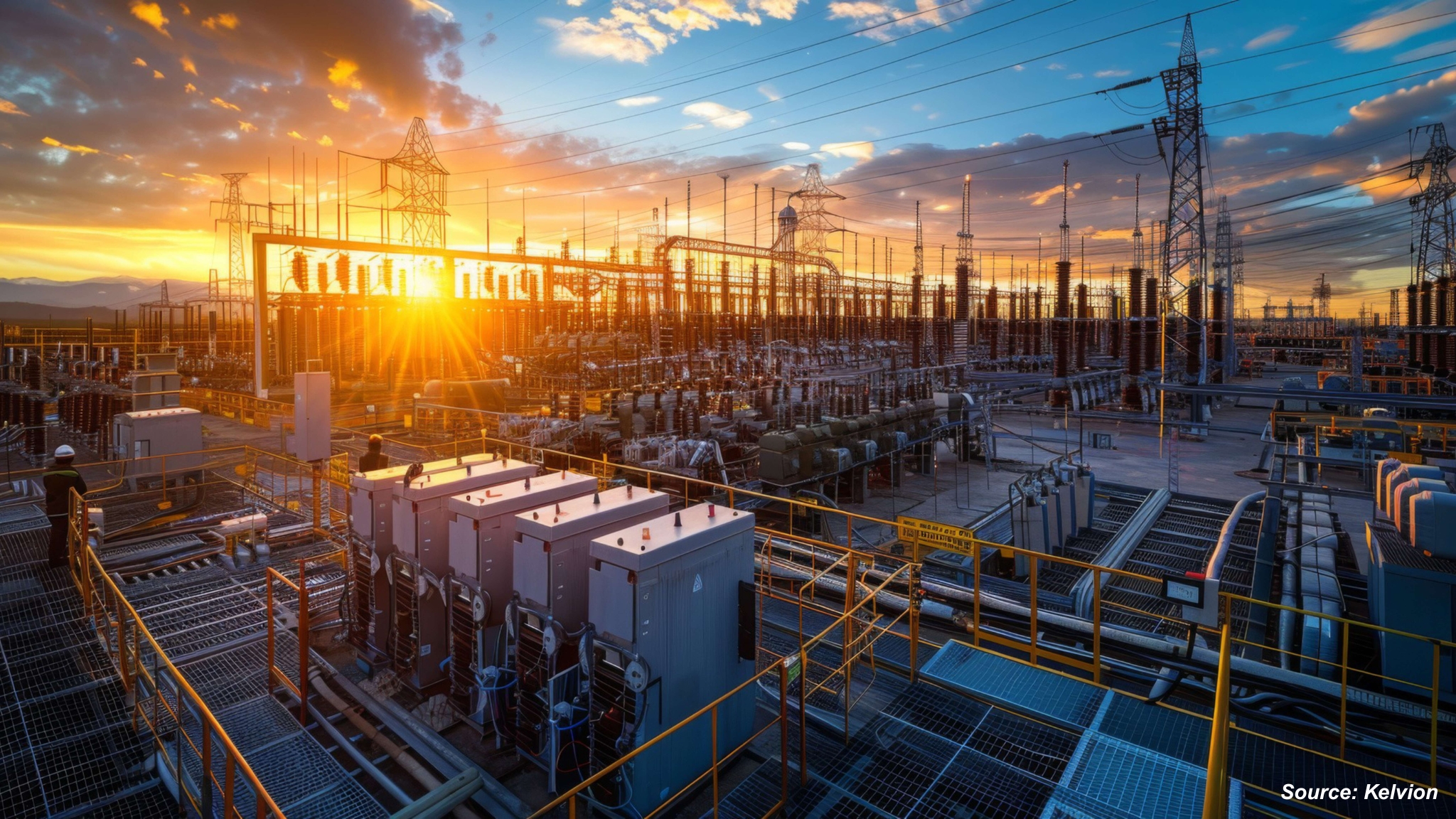
Boilers Market by Technology (Fire Tube, Water Tube, Condensing vs Non-Condensing, Others), by Fuel (Natural Gas, Oil Fired, Coal Fired, Biomass Fired, Electricity, Waste Heat Sources), by Capacity (0.3–2.5 MMBtu/hr, 2.5–10 MMBtu/hr, 10–50 MMBtu/hr, 50–100 MMBtu/hr, 100–175 MMBtu/hr, >250 MMBtu/hr), by Configuration (Modular Units, Centralized Boiler House Systems), by End-User (Residential, Commercial, Industrial) – Global Opportunity Analysis and Industry Forecast, 2025–2030.
Industry Overview
The global Boilers Market size was valued at USD 123.23 billion in 2024 and is predicted to reach USD 133.46 billion by the end of 2025. The industry is predicted to reach USD 198.83 billion by 2030 with a CAGR of 8.3% from 2025 to 2030.
The market is experiencing steady growth, driven by rising demand for energy-efficient heating solutions, rapid industrialization, and expanding urban infrastructure. As industries and consumers prioritize sustainability and cost savings, high-efficiency boilers are gaining traction across residential, commercial, and industrial sectors.
Urban growth in emerging economies, coupled with infrastructure development and smart city initiatives, is further boosting market demand. Regulatory pressure to reduce emissions and adopt cleaner technologies is compelling the replacement of outdated systems with advanced, low-emission boilers.
However, the high initial cost of these systems remains a key barrier, particularly for cost-sensitive users. At the same time, technological advancements, including the integration of smart and IoT-enabled features, are creating new growth opportunities by enhancing operational efficiency and aligning with digital infrastructure trends. Overall, the market is being shaped by a combination of environmental, economic, and technological factors, positioning it for sustained long-term expansion.
Rising Demand for Energy-Efficient Heating Solutions Drives Boiler Adoption
The increasing demand for energy-efficient heating solutions is a key driver of the market, as consumers and industries seek to reduce energy consumption, lower operational costs, and comply with environmental regulations. High-efficiency boilers, such as condensing models, offer improved thermal performance by capturing and reusing waste heat, making them an attractive alternative to conventional systems.
This trend is further supported by government initiatives, including strict energy-efficiency standards, emissions regulations, and financial incentives like subsidies and tax benefits. As a result, the shift toward sustainable and cost-effective heating is accelerating the adoption of advanced boiler technologies across residential, commercial, and industrial sectors.
Industrial Growth and Urbanization Fuels Market Expansion
Rapid industrialization and urbanization, particularly in emerging economies, remain key drivers of the boilers market growth. According to the World Bank in 2024, the urban population in the United States stands at 84% of the total population, reflecting a mature urban infrastructure with established demand for advanced heating systems.
In contrast, India’s urban population is 37%, indicating significant potential for future urban expansion and infrastructure development. As India and other emerging economies continue to urbanize, there is a growing need for boilers in newly built residential and commercial buildings, as well as in expanding industrial sectors such as chemicals, pharmaceuticals, food processing, and paper manufacturing, all of which require reliable heating solutions.
Large-scale infrastructure projects, industrial corridors, and smart city initiatives are further accelerating boiler installations. This parallel growth in urban infrastructure and industrial output across varying stages of development is driving sustained demand for both industrial and commercial boilers globally.
Government Regulations and Emission Standards Accelerates Market Growth
Stringent government regulations and emission standards are significantly driving the growth of the market. In an effort to reduce air pollution and greenhouse gas emissions, regulatory bodies across the globe are mandating stricter efficiency benchmarks and lower emission limits for heating equipment. These policies are compelling industries and building owners to replace older, inefficient boilers with modern systems that comply with environmental standards.
Governments are also introducing supportive measures such as carbon pricing, energy-efficiency labelling, and financial incentives to encourage the adoption of cleaner technologies. This regulatory pressure is not only boosting demand for high-efficiency, low-emission boilers but also stimulating innovation among manufacturers to develop environmentally compliant solutions, thereby reshaping the competitive landscape of the market.
High Initial Cost of Advanced Boiler Systems Limits Market Growth
One major restraint in the boilers market expansion is the high upfront cost associated with purchasing and installing advanced, energy-efficient boiler systems. While these modern boilers offer long-term savings through reduced energy consumption and maintenance, the initial investment is a significant barrier, particularly for small and medium enterprises (SMEs) and residential users. Costs related to system upgrades, retrofitting, and compliance with new emission standards further add to the financial burden, slowing down adoption in cost-sensitive markets.
Integration of Smart and IoT-Enabled Boiler Technologies Unlocks New Growth Opportunities
A key opportunity in the market lies in the growing demand for smart and IoT-enabled boiler systems. These advanced systems allow for real-time monitoring, predictive maintenance, remote control, and optimization of performance, leading to improved energy management and operational efficiency.
As digitalization spreads across industrial and building infrastructure, integrating intelligent features into boilers offers manufacturers a chance to differentiate their products, cater to smart building trends, and tap into new market segments focused on automation and sustainability.
Market Segmentations and Scope of the Study
The boilers market report is segmented by technology, fuel type, capacity, configuration, end-user, and regions. Technologies include fire tube, water tube, condensing and non-condensing, electric boilers, and heat recovery boilers, each catering to specific performance and application needs. Fuel types comprise natural gas, oil-fired, coal-fired, biomass-fired, electricity, and waste heat sources. End users span residential, commercial, and industrial sectors. Geographically, the market is analysed across North America, Europe, Asia-Pacific, and the Rest of the World, reflecting strong and growing demand across diverse regions and industries.
Geographical Analysis
In North America, especially the United States and Canada, strict environmental regulations and efforts to reduce carbon emissions are driving demand for high-efficiency and low-emission boilers. Government initiatives such as the U.S. Department of Energy’s energy-efficiency programs and Canada's climate action plans are promoting the replacement of old systems with cleaner technologies.
In Europe, the boilers market share is being driven by the widespread adoption of district heating systems and a strong regulatory push toward sustainability and energy efficiency. District heating, especially common in countries like Germany, Sweden, and Denmark, enables centralized heat generation through large-scale, efficient boilers that integrates renewable energy and waste heat sources.
The European Union’s Eco-design Directive and the European Green Deal are key policy instruments encouraging the use of low-emission, high-efficiency boilers by setting strict environmental standards and promoting decarbonization. Additionally, government incentives, rising carbon taxes, and support for energy renovation programs are accelerating the replacement of old systems with modern, eco-friendly alternatives, positioning Europe as a leader in the transition to clean heating technologies.
In the Asia-Pacific region, the market is experiencing strong growth due to rapid industrialization and large-scale infrastructure development, particularly in countries like China, India, and across Southeast Asia. Expanding sectors such as manufacturing, chemicals, textiles, pharmaceuticals, and food processing rely heavily on boilers for steam and heat generation, creating sustained industrial demand.
At the same time, massive investments in urban infrastructure, driven by population growth, urban migration, and government-led development initiatives, are increasing the need for reliable heating solutions in residential, commercial, and institutional buildings. Supportive policies, rising energy needs, and efforts to modernize aging energy systems are further contributing to the adoption of advanced, efficient boiler technologies across the region.
In the Rest of the World, which includes regions such as Latin America, Africa, and the Middle East, the market is being driven by expanding energy access, accelerating urbanization, and infrastructure modernization. As governments and private sectors invest in upgrading public utilities, industrial facilities, and residential housing, there is a growing demand for reliable and efficient heating systems to support economic development and rising living standards.
Urban population growth is leading to the construction of new residential and commercial buildings that require centralized or semi-centralized heating, while industries such as mining, petrochemicals, and food processing are increasingly adopting modern boiler systems to improve productivity and comply with environmental and safety standards. In many of these emerging markets, where centralized heating systems have traditionally been limited, the need for decentralized, efficient boiler solutions is creating new opportunities for market expansion, particularly in off-grid or semi-urban areas undergoing rapid transformation.
Strategic Developments in the Industry
Key players in the boilers industry are actively pursuing product innovation, strategic acquisitions, and international project expansion to strengthen their global footprint and meet evolving industrial demands.
-
In June 2025, Ambienta-backed Babcock Wanson acquired Chr Møller, a Danish specialist in industrial boiler services, as part of its European expansion strategy.
-
In June 2025, AERCO launched the CFR series, a stainless‑steel condensing boiler allowing Category I venting; expanded with a 2000 MBH model.
-
In January 2025, Babcock Wanson launched its LV‑Pack low‑voltage industrial electric boiler in January 2025, offering outputs from 600 kg/h to 8,400 kg/h. It targets industrial process heating with electric boilers up to 18 barg pressure.
-
In July 2024, Thermax Limited secured an international order worth USD 62 Million in mid‑2024 to supply two 550 TPH CFBC boilers to Botswana for national power generation.
Key Benefits
-
The report provides quantitative analysis and estimations of the market from 2025 to 2030, which assists in identifying the prevailing sector opportunities.
-
The study comprises a deep-dive analysis of the current and future boilers market trends to depict prevalent investment pockets in the industry.
-
Information related to key drivers, restraints, and opportunities and their impact on the market is provided in the report.
-
Competitive analysis of the key players, along with their market share is provided in the report.
-
SWOT analysis and Porters Five Forces model is elaborated in the study.
-
Value chain analysis in the market study provides a clear picture of roles of stakeholders.
Boilers Market Key Segments
By Technology
-
Fire Tube
-
Water Tube
-
Condensing vs Non Condensing
-
Electric Boilers
-
Heat Recovery Boilers
By Fuel
-
Natural Gas
-
Oil Fired
-
Coal Fired
-
Biomass Fired
-
Electricity
-
Waste Heat Sources
By Capacity
-
0.3 – 2.5 MMBtu/hr
-
2.5 – 10 MMBtu/hr
-
10 – 50 MMBtu/hr
-
50 – 100 MMBtu/hr
-
100 – 175 MMBtu/hr
-
> 250 MMBtu/hr
By Configuration
-
Modular Units
-
Centralized Boiler House Systems
By End User
-
Residential
-
Commercial
-
Healthcare
-
Offices
-
Lodging
-
Education
-
Retail
-
Others
-
-
Industrial
-
Chemicals
-
Food & Beverage
-
Power & Utilities
-
Pulp & Paper
-
Refinery
-
Primary Metal
-
Others
-
By Region
-
North America
-
The U.S.
-
Canada
-
Mexico
-
-
Europe
-
The UK
-
Germany
-
France
-
Italy
-
Spain
-
Denmark
-
Netherlands
-
Finland
-
Sweden
-
Norway
-
Russia
-
Rest of Europe
-
-
Asia-Pacific
-
China
-
Japan
-
India
-
South Korea
-
Australia
-
Indonesia
-
Singapore
-
Taiwan
-
Thailand
-
Rest of Asia-Pacific
-
-
RoW
-
Latin America
-
Middle East
-
Africa
-
Key Players
-
Babcock Wanson
-
Velocity Boiler Works
-
Unilux Advanced Manufacturing, LLC
-
Aerco
-
Reimers Electra Steam, Inc
-
Miura America Co., LTD
-
Thermax Limited
-
The heat transfer innovators,
-
Babcock & Wilcox Enterprises, Inc.
-
Viessmann Group
-
ALFA LAVAL
-
Miura A
REPORT SCOPE AND SEGMENTATION:
|
Parameters |
Details |
|
Market Size in 2025 |
USD 133.46 Billion |
|
Revenue Forecast in 2030 |
USD 198.83 Billion |
|
Growth Rate |
CAGR of 8.3% from 2025 to 2030 |
|
Analysis Period |
2024–2030 |
|
Base Year Considered |
2024 |
|
Forecast Period |
2025–2030 |
|
Market Size Estimation |
Billion (USD) |
|
Growth Factors |
|
|
Countries Covered |
28 |
|
Companies Profiled |
15 |
|
Market Share |
Available for 10 companies |
|
Customization Scope |
Free customization (equivalent up to 80 working hours of analysts) after purchase. Addition or alteration to country, regional, and segment scope. |
|
Pricing and Purchase Options |
Avail customized purchase options to meet your exact research needs. |














 Speak to Our Analyst
Speak to Our Analyst




















